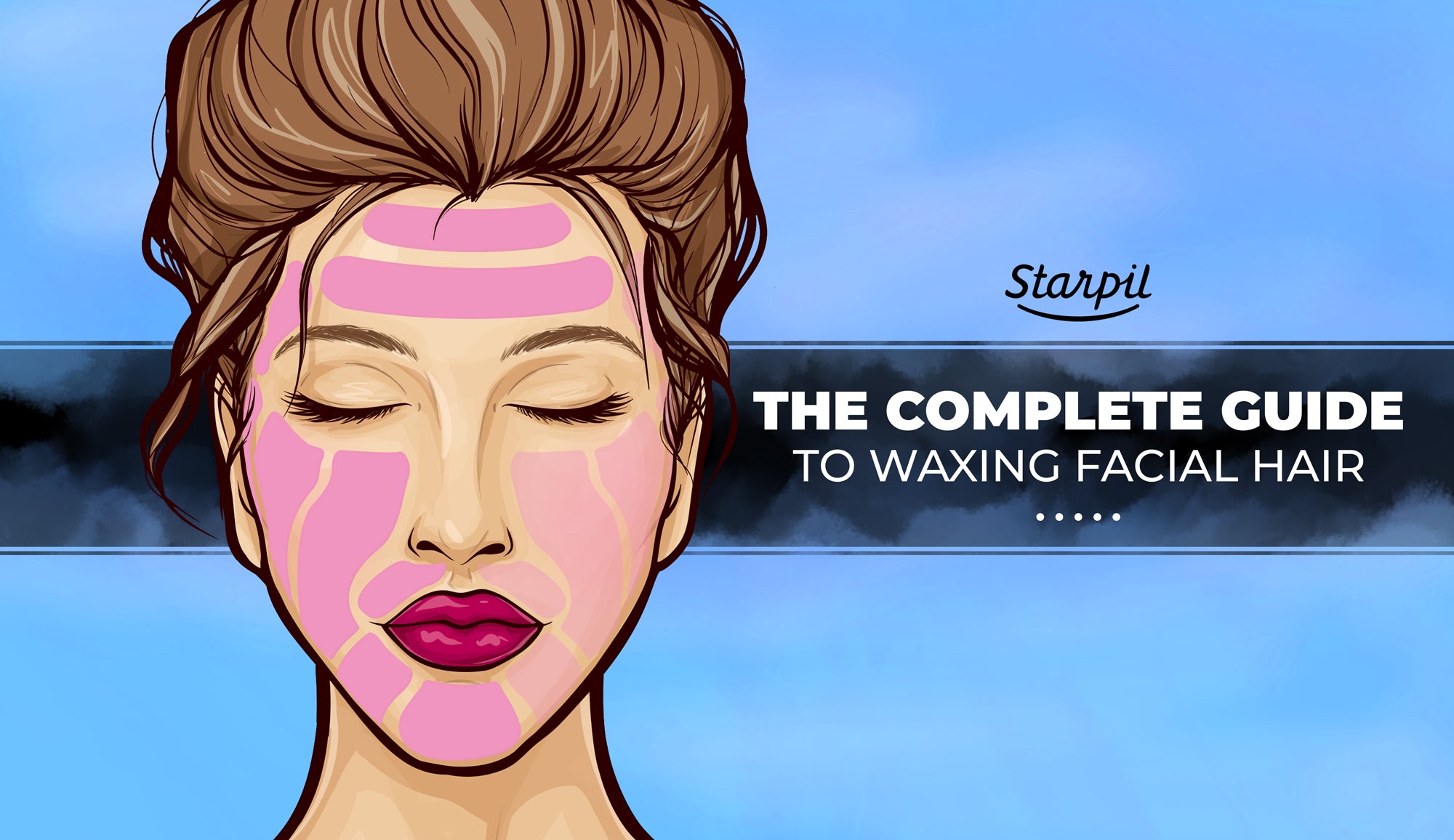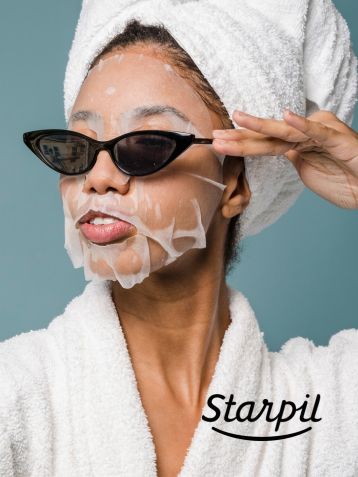Human Trafficking in the Beauty Industry

January is Human Trafficking Awareness Month and as a part of the waxing and beauty industry, we at Starpil Wax wanted to take a moment to talk about how human trafficking impacts our industry, and how to be more aware of its signs.
With our headquarters located in Miami, Florida, which is the city with the third-highest rates of human trafficking in the country, we feel compelled to share resources to raise awareness of the issue at large, and how to spot possible indications that a client might be a victim of this.
Table of Contents
In this article, we’ll discuss what human trafficking is, and look at statistics and indicators, as well as the myths vs. realities of human trafficking so that you have the tools you need to look out and be of help if needed.
To educate and raise awareness of this illegal practice and its impact on the beauty industry, Starpil will also donate $0.25 of every order for the entire month to No More Tears, an organization dedicated to assisting and empowering victims of human trafficking and domestic violence.
READ: How to Start a Waxing Business in 2023
What is Human Trafficking?
According to Homeland Security, “Human trafficking involves the use of force, fraud, or coercion to obtain some type of labor or commercial sex act.”
Every year, over 25 million women, men, and children are trafficked worldwide, with an estimated 50,000 of those cases occurring in the United States alone.

Human trafficking should not be confused with human smuggling, where people are kidnapped and illegally brought across foreign borders. Human trafficking and human smuggling alike can however happen in any community and victims range from any age, race, gender, nationality, or socioeconomic background.
There is a common perspective that traffickers use violent measures to entrap or lure their victims, but common tactics involve manipulation, or using the deception of a well-paying job or romantic relationship to lure victims into the trafficking world.
Human trafficking can often go unnoticed to those without a trained eye, as many victims have language barriers, fear of their traffickers which prevents them from reaching out, and/or fear of law enforcement. These can be big factors in why victims refrain from seeking help, and unfortunately also keeps this crime hidden from public consciousness.
The Homeland Security database on human trafficking also states that:
“Traffickers look for potential victims that appear susceptible for various reasons, including psychological or emotional vulnerability, economic hardship, lack of a social safety net, natural disasters, or political instability. The trauma caused by the traffickers can be so great that many may not identify themselves as victims or ask for help, even in highly public settings.”
There are many myths and misconceptions surrounding trafficking, which is understandable since there isn’t a ton of information out there as to practices and how trafficking works. To raise awareness and educate those who might encounter victims of human trafficking, it’s important to know the signs and indicators of the illegal practice.
READ: How to Calculate ROI for Your Waxing Services
Human Trafficking in the Beauty Industry
Though not the same, human trafficking and sex trafficking are often confused or regarded as one and the same. Human trafficking is more than sex trafficking, however. Human trafficking also describes how people are held against their will in forms of modern slavery worldwide, including in the United States. 55% of labor trafficking includes women, with many forced into the beauty industry.

Trafficking within the beauty industry includes both labor and sex trafficking. On one hand, perpetrators might bring victims into waxing salons or estheticians’ offices to receive hair, makeup, or waxing services. On the other side, many victims are forced into the hair, nail, and spa industries as those providing these services to others. Some can also be forced into illicit massage or sex work through seemingly legitimate businesses.
Many survivors report experiencing coercion under false pretenses to a location and put under indentured servitude to work for very little or no pay. Many times their “pay” was delivered back to their perpetrators to “reimburse” them for the upfront legal costs of getting the trafficked individual into the country, food, lodging, training, and licensing for the services they’re providing.
Polaris, a national nonprofit working to combat human trafficking in the U.S., reports that though these beauty service workers that are being trafficked have regular contact with clients, language barriers and intensive surveillance can make it difficult for victims to reach out for help.
Victims might think that everything is fine while in school or assisting, with no or unclear knowledge of when they will finally be paid or might realize the reality of the situation long after the fact that they’ve been trafficked. They may also find themselves working long hours without pay in unhealthy situations where they lack basic PPE or are exposed to harsh chemicals. Perpetrators will also move victims from salon to salon frequently to avoid them from getting “regulars” or making connections with the outside world.
READ: An Esthetician’s At-Home Skincare Routine
Human Trafficking Facts
Here are more human trafficking facts elaborating on how victims are lured and coerced into this world.


Human Trafficking Statistics
Human trafficking statistics are often difficult to pinpoint because of the nature of these crimes and how often they go unreported.
 The data above has been gathered from SafeHorizons.org.
The data above has been gathered from SafeHorizons.org.
READ: What is the Average Full Body Wax Price?
Human Trafficking Awareness
Due to the many misconceptions of what these crimes look like, knowing the myths vs. realities of human trafficking is key to spreading human trafficking awareness.

Data gathered from Homeland Security.
Indicators of Human Trafficking
Recognizing key indicators of human trafficking could help identify a victim and potentially save a life. The common indicators of human trafficking include:


Indicators courtesy of “Human Trafficking: Spot the Signs”.
READ: Best Esthetician Services to Offer Clients

Make a difference and help bring awareness to human trafficking in the beauty industry. Utilize these complementary resources at your salon or business to potentially help someone in need.
Human Trafficking Awareness Resources You Can Use
Final Thoughts

Human trafficking can be difficult to spot if you’re not well-versed or educated in what to look for. However, giving yourself and your salon staff the resources to recognize if something is wrong could go a long way in helping someone who is being victimized.
If you feel like you’re witnessing human trafficking, the most important things are the safety of the victim and the public. Never try to confront a suspected trafficker directly or let a victim know your suspicions. Contact your local law enforcement to address and investigate the issue.
Here are some other resources you can check out for other ways you can help.
- Kristi House - Miami, FL https://kristihouse.org/kristis-story/
- The Women’s Fund - Miami, FL https://womensfundmiami.org/stop-sex-trafficking/
- The Blue Campaign - DHS https://www.dhs.gov/blue-campaign
- South Florida Human Trafficking Task Force https://www.sfhumantraffickingtaskforce.org/
Recognizing the signs and doing what you can to help someone in a vulnerable situation can free them and even save a life. You can also make a difference by donating or volunteering with local organizations that work to prevent and spread awareness of human trafficking.
Starpil is also proud to do our part to help in fighting against human trafficking. For the entire month of January, we will donate $0.25 of every order to No More Tears, which is an organization that helps provide services for survivors escaping abusive situations, including human trafficking. Learn more about their work and how you can get involved to make a difference in someone’s life.







Commentaires